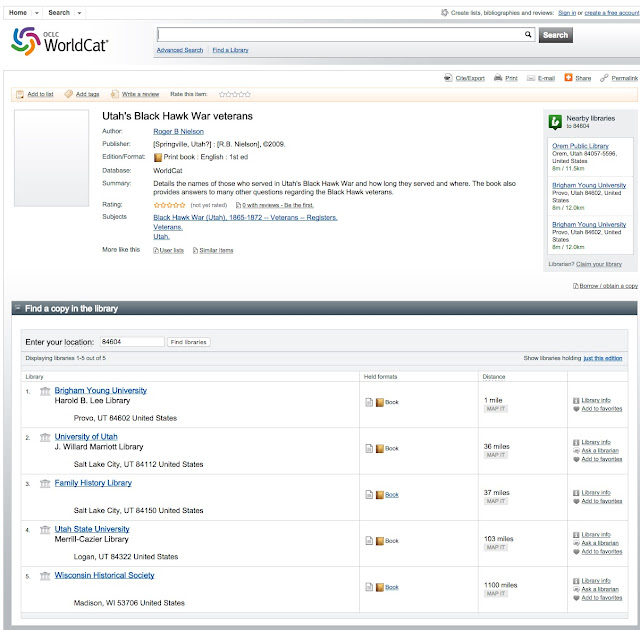The FamilySearch.org Family Tree is unique in its accumulation of genealogical records accumulated over the past 150 years. Long before the Internet and a long time before computers were even a glimmer of a possibility, way back in 1894,
The Church of Jesus Christ of Latter-day Saints began formally accumulating genealogical records through the
Genealogical Society of Utah. Microfiliming of records around the world began many years later in 1938. By the time computers became available to assist in the this vast work, millions of records had already been amassed.
In about 1998, the Church made the decision to start a family history website. About that same time the Church began using the trade name "FamilySearch" to refer to its genealogical activities. Ultimately, the Church's genealogical efforts were consolidated in an organization called FamilySearch, International. The
FamilySearch.org website went online in May, 1999. In 2001, the Church began working on a family tree program called new.FamilySearch.org. The program was released in a trial or Beta version in November, 2005. At the time the program was introduced, the decision was made to incorporate as much of the previously submitted family history information as possible. Included in the original database were the following huge collections of family names and families:
- The Ancestral File
- The Pedigree Resource File
- The International Genealogical Index
- Church Membership Records
- Temple Records
After struggling with new.FamilySearch.org for some time, FamilySearch began developing an alternative to the new.FamilySearch.org program called the Family Tree. Eventually, the Family Tree program replaced the new.FamilySearch.org program and the earlier program was discontinued. However, the original database with all of the additional records that had been contributed to new.FamilySearch.org were used to populate the Family Tree. Nearly all of the various genealogical functions and websites introduced by FamilySearch were finally consolidated into the
FamilySearch.org website, including the Family Tree.
During all of this time from 1894 and earlier, there was no practical or effective mechanism for verifying the accuracy of any of the records submitted. Duplicate submissions were also a challenge and acknowledged as a reason for concern from the earliest times. From the moment when the original contents of all of the huge databases were combined, it was evident that there was a monumental problem with duplication and accuracy. As the Family Tree developed, it inherited some of the limitations and problems of the new.FamilySearch.org program, but it also inherited the accumulated issues of all of the data beginning back in the 1800s.
For example, I began my own efforts to accumulate family information in about 1982. At the same time, I began my first limited efforts to computerize all of my data. Early on, I contributed a GEDCOM copy of my initial data on two occasions to the Pedigree Resource File. Both of my very tentative, incomplete and inaccurate files were directly incorporated into the new.FamilySearch.org program and subsequently into the Family Tree. In short, I was faced and continue to be faced with the difficulty of correcting my own errors and omissions with a very public online family tree.
For whatever reason, rather than directly confronting the issue of the tentative nature of the original data and the inaccuracy of some of the subsequently contributed data, FamilySearch has focused on other issues. However, the nature of the Family Tree is that as a wiki, the program is self-correcting. For those using the program, the self-correcting feature may seem like a defect rather than a benefit, but fundamentally, the Family Tree is ultimately the solution to all of the previous issues of accuracy and duplication of effort. Frustration with the program comes from lack of knowledge of the function of a wiki and is exacerbated by a lack of willingness to cooperate with others in correcting the information.
In fact, the information in the program is being corrected and duplicates being eliminated at an amazingly fast pace.
Unfortunately, users of the Family Tree have a tendency to focus on their minute portion of the overall data. They fail to see the huge number of sources being added and the corrections going on each day. All they see is "change" and change is disturbing to most people. When I am confronted with a belligerent, vocal and disturbed critic of the Family Tree, it can take me hours to talk them through how the program works and help them understand why there is a need to be critical of the data and make corrections. As the FamilySearch Product Manager for the Family Tree, Ron Tanner, has said over an over again, the fundamental issue is "mytree-itis," thinking we each own the Family Tree.
In some recent posts, I began the process of analyzing the accuracy of the Family Tree using my own very small portion of the entire tree. Actually, so far, I have found that the information is well based and accurate, as well as complete, back five generations from myself. I might add a side comment, in all my reading about DNA testing, I read over and over how DNA testing is only very accurate to 5 or at most 6 generations. So, having five accurate and complete generations, with mostly correct entries in the 7th generation is an accomplishment especially when we are talking about a lineage that stretches back into the 18th Century and earlier. My efforts to point out the reliability of the Family Tree are directed at demonstrating that this sort of evaluation needs to be done on every line to correct long-standing errors.
Now, if you feel frustrated with the Family Tree, then get over it. You need to recognize that you are collaborating in a great work and that it is neither easy nor simple. As President Harry Truman said, and as I have previously quoted, "if you can't stand the heat, get out of the kitchen."
This is really a series, as such, it is more of a theme. Stay tuned for more comments.






































